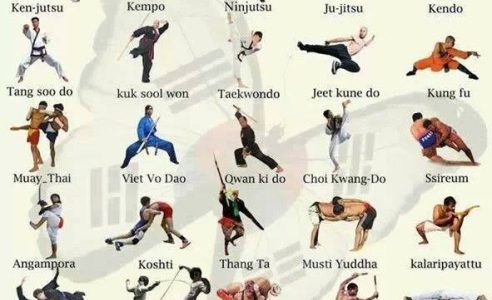A Relative Study Of Standard Martial Arts And Modern Combat Sports: Highlighting The Essential Distinctions
A Relative Study Of Standard Martial Arts And Modern Combat Sports: Highlighting The Essential Distinctions
Blog Article
your input here -Keith Finnegan
When you think about martial arts, do you lean more toward the traditional methods or the contemporary fight sports? Each path provides special benefits and experiences, shaped by their philosophies and training methods. Traditional martial arts stress individual growth and self-control, while contemporary fight sporting activities focus on competition and efficiency. Recognizing these distinctions can guide you in picking the right technique for your trip. Yet how do these distinctions manifest in training and philosophy?
The Approach and Background Behind Typical Martial arts
While many individuals connect martial arts with physical battle, the approach and background behind typical martial arts run much deeper. You'll locate that these disciplines emphasize individual growth, self-control, and regard.
Stemming from ancient practices, standard martial arts were typically developed for Self-Defense and spiritual growth. They personify principles such as equilibrium, consistency, and self-control, leading professionals past simple fighting abilities.
As you educate, you'll not only discover techniques yet additionally obtain understandings right into the society and values that shaped these arts. The routines and practices, frequently given with generations, cultivate a sense of area and belonging.
The Competitive Nature of Modern Fight Sports
Modern fight sports have actually transformed the landscape of martial arts into an extremely competitive field, where athletes take on in a test of ability, method, and endurance.
You'll see that competitors are typically organized with strict rules and regulations, ensuring fair play and safety and security. These occasions bring in large target markets, sustaining the excitement and strength of competitions.
Professional athletes train carefully, not just for physical expertise yet likewise for psychological durability, recognizing that every detail counts in the ring. The adrenaline rush throughout competitions is apparent, as boxers push their limitations to assert success.
Followers appreciate the athleticism and creativity involved, making modern-day battle sports a thrilling phenomenon that remains to advance and captivate lovers around the world.
Training Techniques and Strategies: A Comparative Analysis
The affordable environment of contemporary fight sporting activities needs cutting-edge training techniques that vary dramatically from traditional martial arts.
In modern training, you'll focus on details methods, sparring, and conditioning, often utilizing drills that imitate actual fight situations. You'll see a focus on measurable performance and constant competitors to analyze your skills.
On martial arts good for autism , typical martial arts prioritize types, katas, and thoughtful mentors, often highlighting technique and regard over competitors.
Training is typically much less extreme and might entail recurring technique instead of real-time sparring.
While both methods construct ability and physical fitness, modern combat sporting activities provide an extra dynamic and versatile training environment, preparing you for immediate challenges in the ring or cage.
Pick the path that aligns with your objectives and interests.
Conclusion
In picking between standard martial arts and modern-day combat sporting activities, it truly boils down to what you value most. If you're looking for personal growth, discipline, and a sense of area, typical arts may be your best fit. Yet if you flourish on competitors and real-time difficulties, modern-day fight sporting activities could be the means to go. Ultimately, both courses offer one-of-a-kind benefits, so it's everything about aligning your training with your personal goals and passions.
